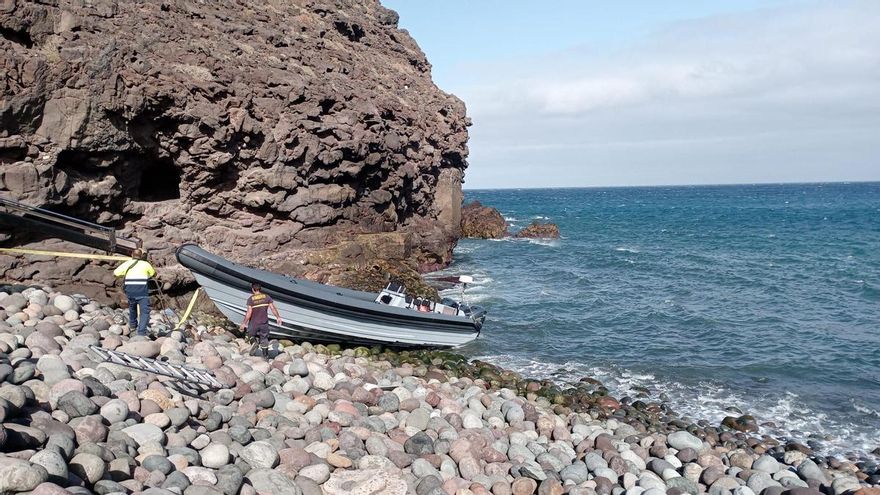
The narcolancha that the Civil Guard intercepted last morning on the beach of La Aldea had about 100 kilos of cocaine on board. The Judicial Police has opened an investigation to try to determine if the boat sailed from Tenerife, since bags from a chain of supermarkets on the island were found inside, and where it was destined. This is the first time seized a rubberas they are called in police jargon, to move drugs through the Archipelago. Last March, another outboard of this type was found to the north of La Isleta, although at that time it was associated with the fact that it could have been dragged by the current from the Strait of Gibraltar.
The intervention was carried out at dawn when the boat, about 12 meters long, was detected in the western section of the aforementioned beach, near El Charco and El Roque. the occupants ran aground in an area near a dirt road that leads to the beach itself, where they were supposedly able to unload a large part of the cargo, according to the sources consulted. However, a hundred kilos of cocaine were left behind, which was intercepted by the Armed Institute.
The agents of the Judicial Police of the Civil Guard have opened an investigation to try to determine the origin of the substance. The sources indicated that abundant food was found inside the narcolancha in bags from a supermarket chain in Tenerife, so it is suspected that the drug left the neighboring island or that its occupants sailed from there to transship the cocaine offshore from a ship.
To carry out the operation, the narcos equipped the outboard with three Yamaha XTO Offshore engines of 375 hp each, valued at more than 50,000 euros per unit, and a high-precision GPS with which to run aground at the established site to proceed with the unloading of the merchandise. And it is that the total cost of this type of boat, which is prohibited in Spain in order to fight drug trafficking, exceeds 200,000 euros due to its high load capacity and the high speeds it can reach.
The investigators are also trying to find out how much drug the drug traffickers were able to unload and with what vehicles they were able to remove it from the beach. Residents of La Aldea pointed out yesterday that the Civil Guard had set up a device in the different exits of the municipality and that during the day a reinforcement of the presence of patrols was noted.
The work to remove the narcolancha from the beach lasted practically all day due to its size, about 12 meters, and its weight. Thus, municipal workers and firefighters from the La Aldea Park Consortium finally decided to split the boat in two in order to proceed with its transfer inside a truck.
This is the first time that the presence of rubber bands in Gran Canaria Since, until now, drug traffickers have used pneumatic zodiacs to introduce hashish from Morocco and sailboats or large ships to transport large quantities of cocaine from the South American continent.
Already in March of this year located another vessel of this type drifting north of La Isleta, in Las Palmas de Gran Canaria. On that occasion, Maritime Rescue proceeded to transfer it to the Sports Pier in the capital of Gran Canaria and sources related to the fight against drug trafficking pointed out that it was unlikely that it would be used to introduce drugs on the Island, relating it to the operations carried out in the Strait. That outboard also had barnacles encrusted on it, indicating that it could have been in the water for quite some time.
The anti-drug operation carried out last night by the Civil Guard is one of the most important that have occurred in recent years on land due to the large quantity of cocaine seized which, unadulterated to increase its weight, could reach a market value of more than six million euros.
















